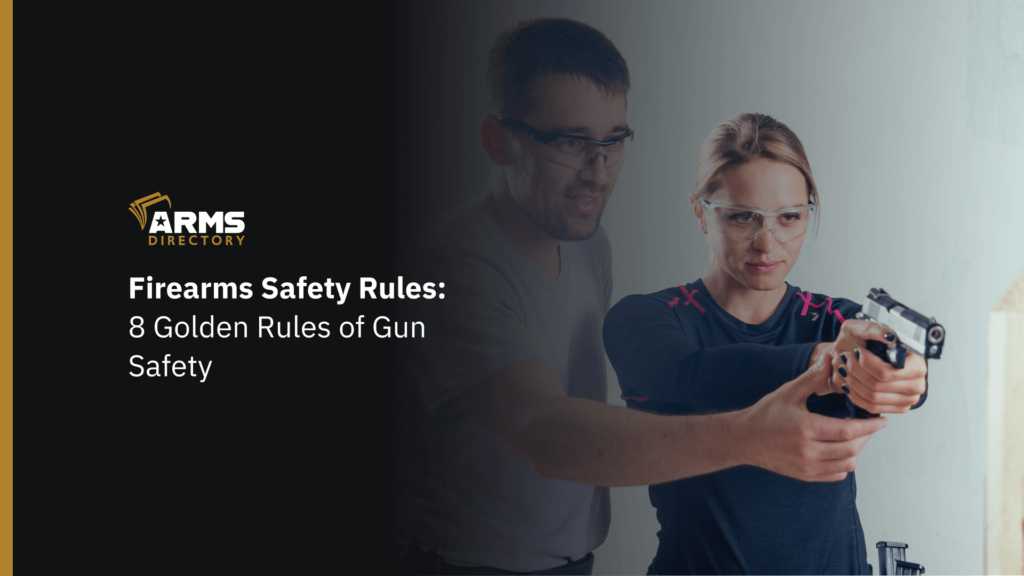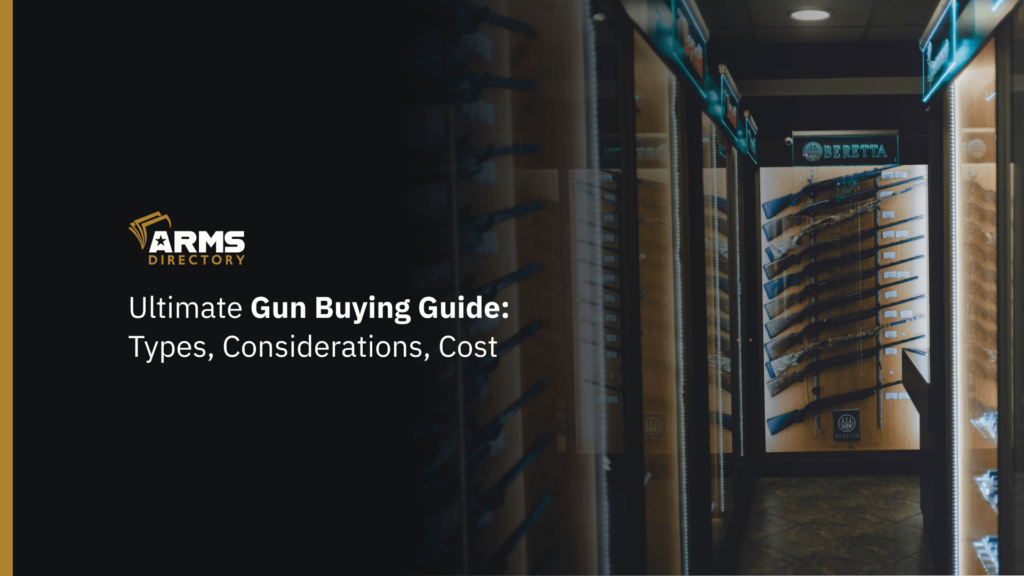![How to Fly With a Firearm [Safe and Legal]](https://vault.armsdirectory.com/wp-content/uploads/2024/01/18071024/How-to-Fly-With-a-Firearm_-Safe-and-Legal-1024x576.png)
How to Fly With a Firearm? [Safe and Legal]
As a gun owner, it is your responsibility to safely transport your firearms. Transporting guns involves both legal and safety precautions. Don’t just throw your gun into your carry-on luggage, and hope for the best.
Instead, make yourself familiar with the rules and regulations to ensure your air travel with firearms goes smoothly.
Today, we will be looking at some essential tips on how to fly with a firearm – the safe and legal way.
How to Fly With a Firearm?
In order to fly with firearms, the Transportation Security Administration (TSA) requires you to be at least 18 years of age, and all firearms and/or ammo must be transported separately in your checked luggage.
So, if the question you have is: can you put a firearm in your checked bag?
Yes, you can. In fact, you may only transport unloaded firearms in a locked hard-sided container as checked baggage.
However, not all guns are allowed on an airplane. These are the weapons the TSA allows to be transported in your checked luggage:
- Handguns
- Pistols
- Shotguns
- Rifles
- BB guns
- Starter pistols
- Compressed airguns
- Firearm parts (magazines, clips, bolts, and firing pins)
- Replica weapons
Flying With a Gun: TSA Rules
Here is a quick summary of TSA rules you should follow when transporting your guns on airplanes:
- You should declare any guns you bring along as checked baggage.
- All firearms are required to be unloaded and secured in a hard-sided container, and they can only be transported as checked baggage.
- Only you should have the key and/or lock combination. Avoid using a TSA lock, to keep anyone but you from easily accessing your gun
- In your checked baggage, you may transport parts like magazines, bolts, and firing pins. Transporting such parts in your carry-on baggage is not permitted.
- You may transport ammunition only in your checked baggage. The maximum capacity you can take is 11 pounds, and it must be in its original packaging or stored securely in a container made for that purpose.
- The TSA allows optics and rifle scopes as carry-on and checked luggage.
- Firearm replicas (including toys) may not be transported in carry-on baggage.
Keep in mind that every airline has its own set of regulations on top of TSA’s, so make sure to do your research beforehand. This way, you will ensure that you fulfill every requirement, in order to be able to fly with your firearms.
Related Post: What Is a Pistol Brace? [History, Regulations, Developments] – Arms Directory
How to Transport a Gun at the Airport?
- Declare your belongings. When you arrive at the airport, you must go to the airline check-in counter agent and inform them that you are traveling with a firearm and/or ammunition.
- Complete and sign a Weapons Declaration Card. This card varies slightly depending on the airline but includes flight information, contact information, and confirmation that you are following the rules.
- Pay potential fees. If your airline charges extra for firearms, you might have to pay a fee, although most let you transport firearms on your regular baggage allowance.
- Head to oversize for inspection and loading. A TSA officer will be requested to meet you by the airline representative. They will ask you to open the case (don’t hand any key or combination) so they can inspect it manually and make sure everything is compliant, before sending it through the scanner for final inspection. Keep in mind that TSA and airline agents should not handle your firearms. If they feel it needs a hands-on inspection, the procedure demands that they call a law enforcement officer.
- Leave the case. At this point, the checked (and locked) weapon case will be loaded onto the belt by TSA will no longer be accessible during the flight. After landing, you can collect it along with the rest of your checked baggage.
- Keep your ears open just in case. Once your firearm has been registered, it is a good idea for you to remain there for an additional 15–20 minutes, just in case further inspection is required.
- Collect your weapons and ammo. Once you arrive, the gun will likely be placed in the Oversized Baggage Area, but it may come out with the regular baggage. If you don’t know where to look, ask an airline representative. Be prepared to show your baggage claim ticket and photo ID if required.
On top of these steps, there are a couple more you might want to take, in order to make your flying experience easier. For example, you might want to check your luggage weight at home, and carefully sort your firearms (in a gun case), so that they are easy to see, and do not get battered.
When it comes to ammunition, you can usually transport it in loaded mags detached from the firearm, although some airlines require it to be stored in dedicated containers or original packaging.
A hard case like Pelican 1170 is perfect for a single pistol, while a long case like the Pelican 1720 paired with a custom foam insert is a great choice for rifles. Traveling with multiple rifles, handguns and extra equipment? Opt for a larger case with ample storage like the Pelican 1650.
Whichever solution you choose, make sure the ammo is kept together and will not scatter around your gun case, which could turn into a headache if your luggage needs to undergo another round of inspect on a connecting flight, for instance.
Related Post: The Right Way to Buy and Sell Firearms Online [Guide]
In a Nutshell
When flying with a firearm, always make sure to bring a printed copy of the firearms policy of the airport, airline, and TSA with you. Never give anyone the code and key for your gun case.
Make sure to be at the airport early, and familiarize yourself with the local rules and laws of the state you are going to. The key towards a smooth flight with guns is to be prepared, and know all the TSA, and airlines requirements.
Are you curious about firearms, gun reviews, or firearm safety tips? Then you should definitely head over to our blog to find out more.
And don’t forget to check out our business directory for further inquiries you might have about purchasing a gun or gun-related accessories.


![Gun Registration Requirements by State [What You Need to Know]](https://vault.armsdirectory.com/wp-content/uploads/2023/10/27073220/Gun-Registration-Requirements-by-State-What-You-Need-to-Know-1024x576.png)
![The Ultimate Shooting Accessories for Every Weapon [A 2023 Beginners Guide]](https://vault.armsdirectory.com/wp-content/uploads/2023/08/30071223/The-Ultimate-Shooting-Accessories-for-Every-Weapon-A-2023-Beginners-Guide-1024x576.png)
![The Right Way to Buy and Sell Firearms Online [Guide]](https://vault.armsdirectory.com/wp-content/uploads/2023/10/20050323/The-Right-Way-to-Buy-and-Sell-Firearms-Online-Guide-1-1024x576.png)

